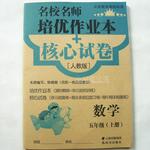题目内容
A baby mermaid was just born in Finland; Justin Bibber is getting married; iphone 6 is going to be released this year…We read rumors every day on the Internet. With the help of social media, rumors — no matter whether they are true or false — spread like wildfire, and sometimes we can’t be sure what to believe.
Now, an international group of researchers might be able to make it easier for us. They are working on a lie detector that could separate online truth from lies, Discovery news reported.
Named after the Greek goddess Pheme, famed for spreading bad rumors, the system is far from a traditional lie detector, which works by attaching a machine to a potential liar. Instead, Pheme analyzes the rumor directly.
When a rumor comes out, on a micro blog, for example, Pheme can trace the source of information to see if it was released by reliable sources like experts or news agencies. If it wasn’t, Pheme then examines the history and background of the account to identify whether it was created just to spread rumors — whether it’s what’s called an “Internet bot.”
After finding the source of the rumor, the system can keep a close eye on how other users react to the rumor — either confirming or denying it — to help analyze and further determine the reliability of the information.
Some people might find the Pheme system unnecessary based on the idea that false rumors never survive for long and people always get to the truth over time. While that’s a fair point, there is a certain class of rumors, such as “a tiger is at large” or “an asteroid (小行星) is about to hit the Earth”, that can cause panic among people and thus lead to serious consequences.
These are cases when we need to be able to check for accuracy quickly. “Our system aims to help with that, by tracking and verifying information in real time,” lead researcher Kalina Bontcheva, at the University of Sheffield, UK, told the BBC.
According to Bontcheva, Pheme is still under development and won’t be ready for another 18 months.
Until then, there’s an old fashioned technique that you can use to protect yourself from false information — ask questions, check sources and don’t believe any claim until you’ve seen the evidence for it.
1.What is the article about?
A. Tips on how to deal with rumors online.
B. Factors that make rumors so easy to spread.
C. A new device that can check whether online rumors are true or not.
D. An introduction to some types of lie detectors.
2.By writing the first paragraph, the writer intends to ________.
A. share with readers some exciting news
B. warn readers not to trust anything on the Internet
C. tell readers rumors are out of control
D. introduce the topic of the passage
3.What makes Pheme different from a traditional lie detector?
A. It works by attaching a machine to a potential liar.
B. It examines a statement’s truthfulness directly.
C. It can identify a rumor and prevent it from spreading.
D. It is controlled by what is called an “Internet bot”
4.How does the Pheme system determine the reliability of a piece of information?
A. Based on the reliability of its sources and the history of its authors.
B. Based on how the majority of people react to it.
C. By collecting and examining relevant information to further confirm it.
D. By making use of an “Internet bot” to track and verify the information.
5.Which of the following statements might the author agree with?
A. The Pheme system is not very helpful because all rumors eventually die down.
B. The Pheme system will be ready to help social networks become more accurate by the end of 2014.
C. The Pheme system can identify almost all kinds of rumors on social networking sites.
D. The Pheme system aims to respond to rumors quickly so as to reduce the impact of false ones.
1.C
2.D
3.B
4.A
5.D
【解析】
试题分析:文章大意:本文是一篇说明文。本文主要介绍的是一种新型的网络谣言探测器。
1.主旨大意题。根据文章大意:本文是一篇说明文。本文主要介绍的是一种新型的网络谣言探测器。,选C。
2.推理判断题。根据文章第一段,作者介绍了人们感兴趣的话题,其目的主要是引出文章要讨论的话题。选D。
3.由第三段的“the system is far from a traditional lie detector, which works by attaching a machine to a potential liar. Instead, Pheme analyzes the rumor directly.”可知Pheme与传统测谎仪的区别在于它直接分析谣言的真实性。选B。
4.推理判断题。由第四段的“Pheme can trace the source of information to see if it was released by reliable sources like experts or news agencies. If it wasn’t, Pheme then examines the history and background of the account to identify whether it was created just to spread rumors”可以推知Pheme主要是通过检测信息来源的可靠性以及核查用户过往的使用记录以及背景资料等来确定一条信息是否可靠。选A。
5.细节理解题。由倒数第三、四段可知Pheme能够对谣言迅速反应,这可以减少一些不可靠谣言对人们的影响,比如使他们惊慌失措等。所以选D。
考点:考日常生活类短文阅读

 名校名师培优作业本加核心试卷系列答案
名校名师培优作业本加核心试卷系列答案 全程金卷系列答案
全程金卷系列答案